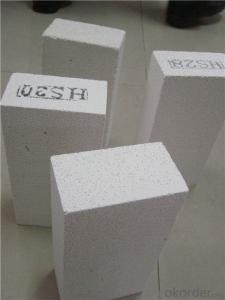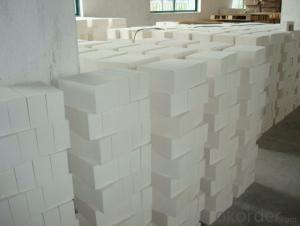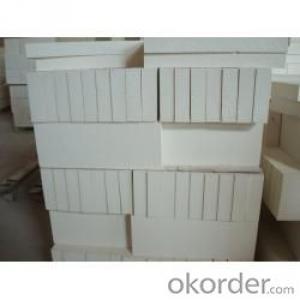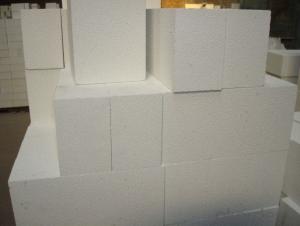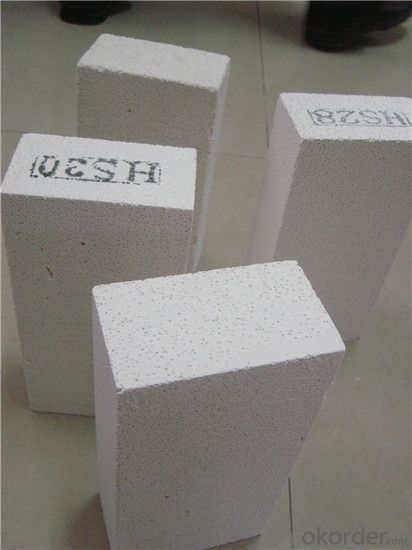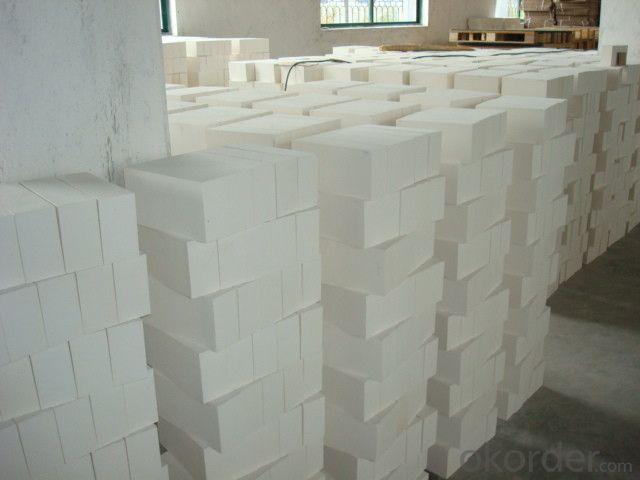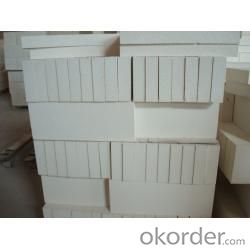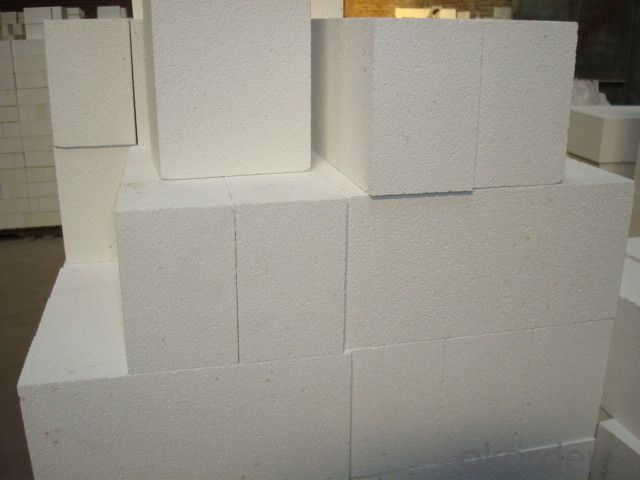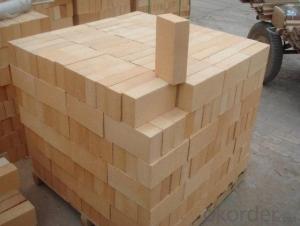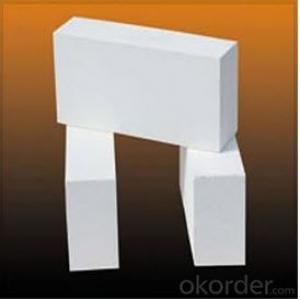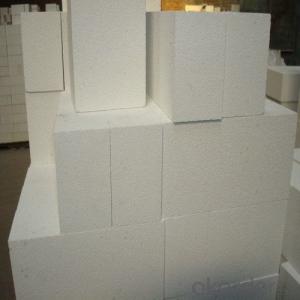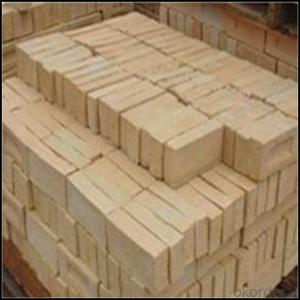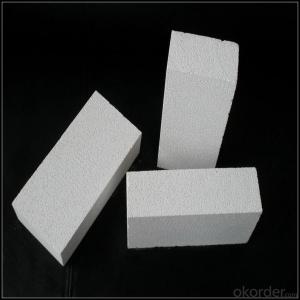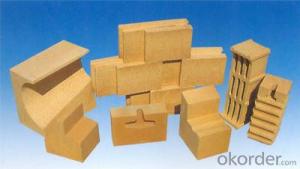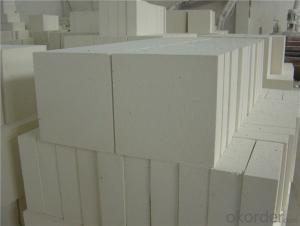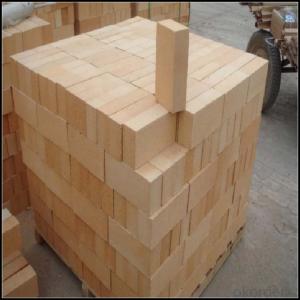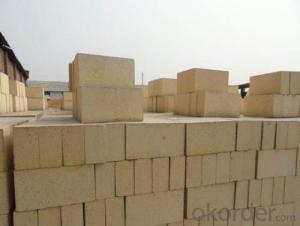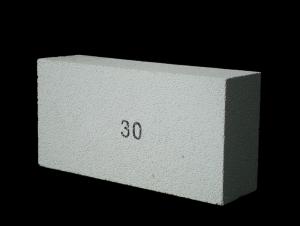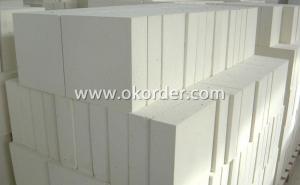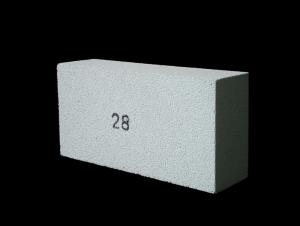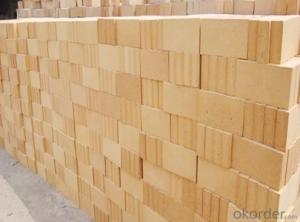Insulating Fire Brick for Blast Furnace High Alumina
- Loading Port:
- Qingdao
- Payment Terms:
- TT OR LC
- Min Order Qty:
- 1 m.t.
- Supply Capability:
- 1000 m.t./month
OKorder Service Pledge
OKorder Financial Service
You Might Also Like
Thermal Insulation Fire Clay Brick
Refractory brick is a block of refractory ceramic material used in lining furnaces, kilns, fireboxes, and fireplaces.
We provide high quality Refractory Fire Bricks that are used on wide range in the various industries like Cement, Glass and Steel. Refractory Fire Bricks are provided as per the quantity and specifications required by the customers. We provide an extensive range of Refractory Fire Bricks at reasonable prices that depend upon the quantity ordered.
Application
Insulating Fire Brick are used for the lining of converter, alternating current arc furnace, direct Current arc furnace and the ladle slag line, etc.
Company Advantage
(1)Long Insulating Fire Brick manufacture history: 25 years manufacturer
(2)Advanced equipment
(3)Diversification of production standards: ISO ANSI FEPA JIS ASTM
(4)Professional marketing team and after-sale service
Insulating Fire Brick main feature:
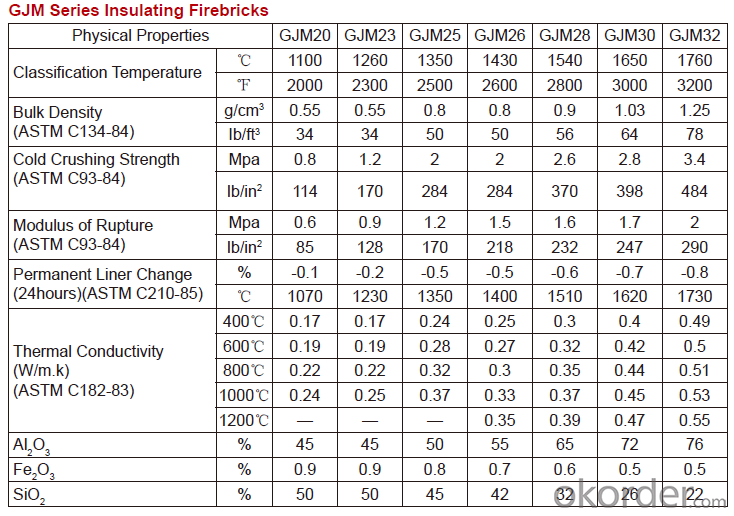
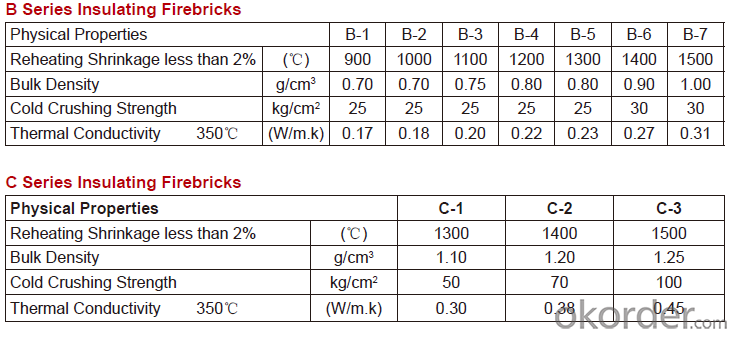
Equipment
1 unit of Ceramic Abrasive (SG Abrasive) pilot production line
2 units of Compact grain Abrasive pilot production lines
1 unit of high-end coated abrasives (abrasive cloth) production line
2 units of Boron Carbide production lines
Q1 What’s the transport method?
A1 FCL delivery goods with wooden pallet or wooden case by sea; If LCL delivery, must with wooden case; Sometimes need open top, flat rack or bulk cargo.
Q2 What’s the required payment term?
A2 Generally 30% TT as the prepayment, 70% TT before delivery. If need, 100% Irrevocable Letter of Credit or negotiation.
Q3 Which country are our products exported to?
A3 Apart from entire Chinese market, the US, Russia, Japan, Korea, Australia and some Southeast Asian Nations.
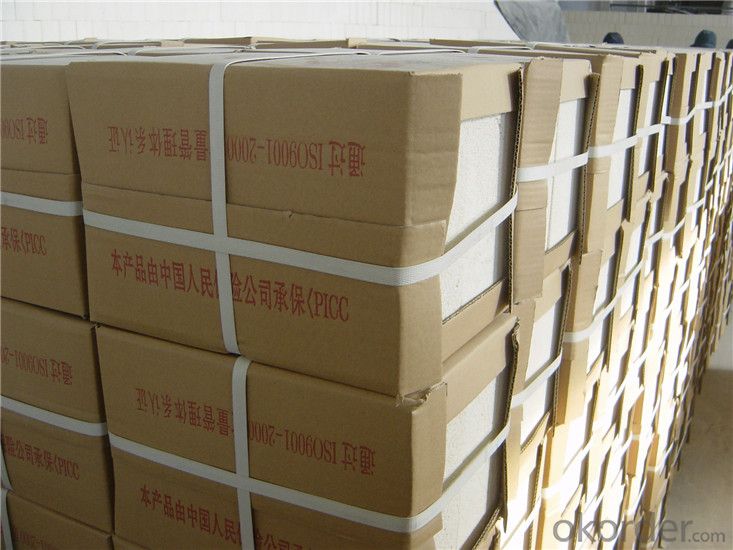
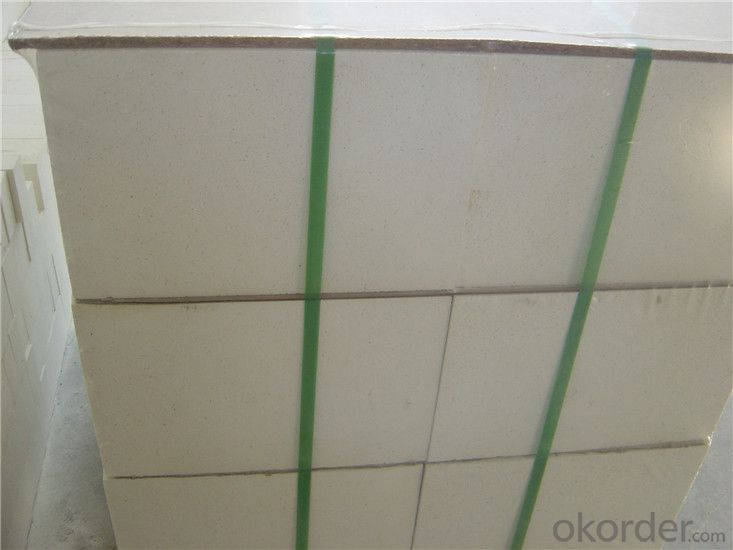
- Q: How do insulating fire bricks provide thermal insulation?
- The unique composition and structure of insulating fire bricks enable them to provide thermal insulation. These bricks utilize lightweight materials like clay, shale, and other minerals, which possess low thermal conductivity. As a result, they are not easily conductive of heat, serving as an effective barrier against heat transfer. Furthermore, insulating fire bricks are intentionally designed to have a porous structure. This design incorporates small air pockets within the bricks, effectively reducing the conduction of heat. These air pockets function as a barrier, effectively restricting the movement of heat from one side of the brick to the other. Moreover, insulating fire bricks possess a high melting point, rendering them suitable for high-temperature applications. This characteristic allows the bricks to endure extreme heat without undergoing deformation or breakdown, ensuring long-lasting thermal insulation. To summarize, the low thermal conductivity, porous structure, and high melting point of insulating fire bricks collectively contribute to their ability to provide thermal insulation. These attributes work in unison to minimize heat transfer, making them an excellent choice for situations requiring thermal insulation.
- Q: Do insulating fire bricks require maintenance?
- Yes, insulating fire bricks do require maintenance. While they are known for their durability and ability to withstand high temperatures, regular maintenance is necessary to ensure their optimal performance and longevity. One key aspect of maintenance is periodic cleaning. Over time, insulating fire bricks can accumulate dust, soot, and other debris, which can affect their insulating properties. Therefore, it is recommended to clean the bricks regularly to remove any build-up. This can be done using a soft brush or a mild cleaning solution. Another important aspect of maintenance is checking for any cracks or damages. Inspecting the bricks for any signs of wear and tear is crucial to identify and address any issues before they worsen. Cracks or damages can compromise the bricks' insulation and stability, so they should be repaired or replaced as needed. Furthermore, it is important to monitor the condition of the mortar or refractory cement used to hold the insulating fire bricks together. Over time, the mortar can deteriorate due to exposure to heat and other elements. Regularly inspecting and repairing any damaged mortar helps to maintain the structural integrity of the fire bricks. In addition to these maintenance tasks, it is essential to follow the manufacturer's instructions and recommendations for the specific type of insulating fire bricks used. This may include guidelines for installation, temperature limits, and any other specific care instructions. Overall, while insulating fire bricks are durable, regular maintenance is necessary to ensure their optimal performance and prolong their lifespan. Proper cleaning, inspecting for damage, and following manufacturer's guidelines are key components of maintaining insulating fire bricks.
- Q: Can insulating fire bricks be used as a lining for kiln cars?
- Yes, insulating fire bricks can be used as a lining for kiln cars. Insulating fire bricks are designed to have excellent thermal insulation properties, which make them suitable for use in high-temperature applications such as kilns. They are capable of withstanding high temperatures without cracking or crumbling, making them an ideal choice for lining kiln cars. Additionally, their lightweight nature makes them easy to handle and install, reducing the overall weight and energy consumption of the kiln. Overall, insulating fire bricks can provide effective insulation and protection for kiln cars, helping to improve their efficiency and longevity.
- Q: Can insulating fire bricks be used for insulation in cement kilns?
- Yes, insulating fire bricks can be used for insulation in cement kilns. Insulating fire bricks have excellent thermal insulation properties and can withstand high temperatures, making them suitable for insulating cement kilns and reducing heat loss.
- Q: What are the common sizes of insulating fire bricks?
- Insulating fire bricks, also known as IFBs, are widely used in various high-temperature applications due to their excellent thermal insulation properties. These bricks are available in different sizes to suit different industrial needs. The common sizes of insulating fire bricks are typically classified based on their dimensions, such as length, width, and thickness. The most common sizes range from 9" x 4.5" x 2.5" (230mm x 115mm x 65mm) to 9" x 4.5" x 3" (230mm x 115mm x 75mm). These sizes are often referred to as standard or regular size IFBs. Apart from the regular sizes, insulating fire bricks can also be found in larger or smaller dimensions to meet specific requirements. For instance, larger IFBs may measure around 12" x 6" x 4" (305mm x 152mm x 102mm), while smaller ones can be as compact as 6" x 4" x 2" (152mm x 102mm x 51mm). It is important to note that the availability of specific sizes may vary depending on the manufacturer or supplier. Some companies may offer customized sizes to cater to the unique needs of their customers. Additionally, the thickness of insulating fire bricks can also vary, with options ranging from 2" (51mm) to 4" (102mm) and beyond. When selecting the appropriate size of insulating fire bricks, it's crucial to consider factors such as the desired insulation properties, operating temperature, and the specific application requirements. Consulting with an expert or referring to manufacturer specifications can help ensure the correct size is chosen for optimal performance and efficiency.
- Q: Can insulating fire bricks be used in the construction of industrial dryers?
- Industrial dryers can utilize insulating fire bricks, which are specifically designed to have low thermal conductivity. This allows them to retain heat and prevent heat loss, making them an ideal option for applications that require high temperatures. These fire bricks are created using lightweight materials like clay, silica, and alumina, and can withstand temperatures of up to 3000°F (1650°C). They possess exceptional insulation properties, leading to reduced energy consumption and improved efficiency for the industrial dryer. Moreover, insulating fire bricks are highly resistant to thermal shock, meaning they can endure sudden temperature changes without cracking or breaking. This quality is particularly crucial in industrial dryer settings where temperature fluctuations can occur rapidly. In conclusion, insulating fire bricks are a suitable choice for constructing industrial dryers due to their low thermal conductivity, resistance to high temperatures, and ability to withstand thermal shock.
- Q: What is the typical weight of an insulating fire brick?
- The typical weight of an insulating fire brick can vary depending on the specific type and manufacturer. However, on average, an insulating fire brick weighs between 2.5 to 3.5 pounds (1.1 to 1.6 kilograms). It is important to note that this weight estimation is for a standard-sized brick, typically measuring 9 x 4.5 x 2.5 inches (22.9 x 11.4 x 6.4 centimeters). Different densities and compositions of insulating fire bricks can result in slight variations in weight, so it is always advisable to refer to the manufacturer's specifications for accurate information.
- Q: Can insulating fire bricks be used in ladles and tundishes?
- Insulating fire bricks prove to be suitable for ladles and tundishes as they are specifically designed to offer high-temperature insulation and thermal stability. These bricks are essential in applications where heat retention plays a pivotal role. Ladles and tundishes are extensively utilized in the steel and foundry sectors for the transportation and pouring of molten metal. By utilizing insulating fire bricks in these vessels, one can effectively minimize heat loss and maintain the desired temperature of the metal. Moreover, these bricks exhibit resilience towards thermal shock and chemical corrosion, which are common obstacles in such extreme temperature environments. Consequently, the utilization of insulating fire bricks in ladles and tundishes ultimately enhances energy efficiency, reduces heat loss, and improves the overall performance and lifespan of these vital pieces of equipment in the metal processing industry.
- Q: Can insulating fire bricks be used for chimney lining?
- Yes, insulating fire bricks can be used for chimney lining. Insulating fire bricks are designed to withstand high temperatures and are excellent for insulating chimneys, providing thermal protection and enhancing energy efficiency.
- Q: What is the typical compressive strength of an insulating fire brick?
- The typical compressive strength of an insulating fire brick varies depending on the specific composition and manufacturing process. However, on average, insulating fire bricks have a compressive strength ranging from 1,000 pounds per square inch (psi) to 3,000 psi. These bricks are designed to withstand high temperatures and provide thermal insulation in various applications, such as kilns, furnaces, and fireplaces. The compressive strength is an important characteristic of insulating fire bricks as it determines their ability to resist crushing and maintain structural integrity under load.
Send your message to us
Insulating Fire Brick for Blast Furnace High Alumina
- Loading Port:
- Qingdao
- Payment Terms:
- TT OR LC
- Min Order Qty:
- 1 m.t.
- Supply Capability:
- 1000 m.t./month
OKorder Service Pledge
OKorder Financial Service
Similar products
Hot products
Hot Searches
Related keywords
